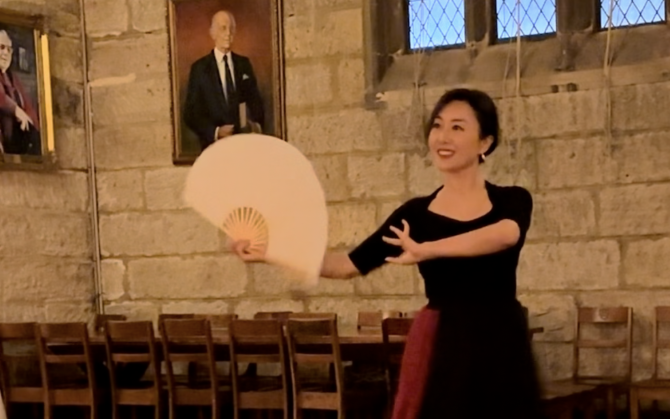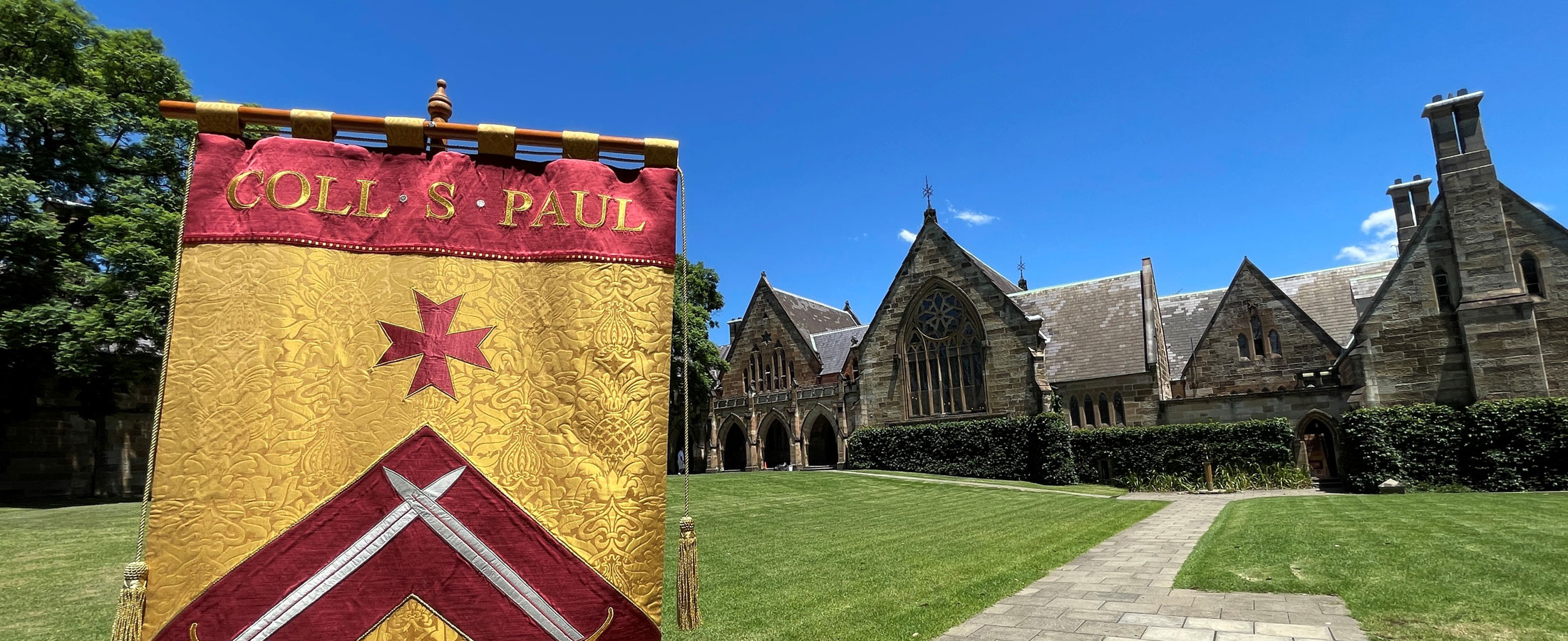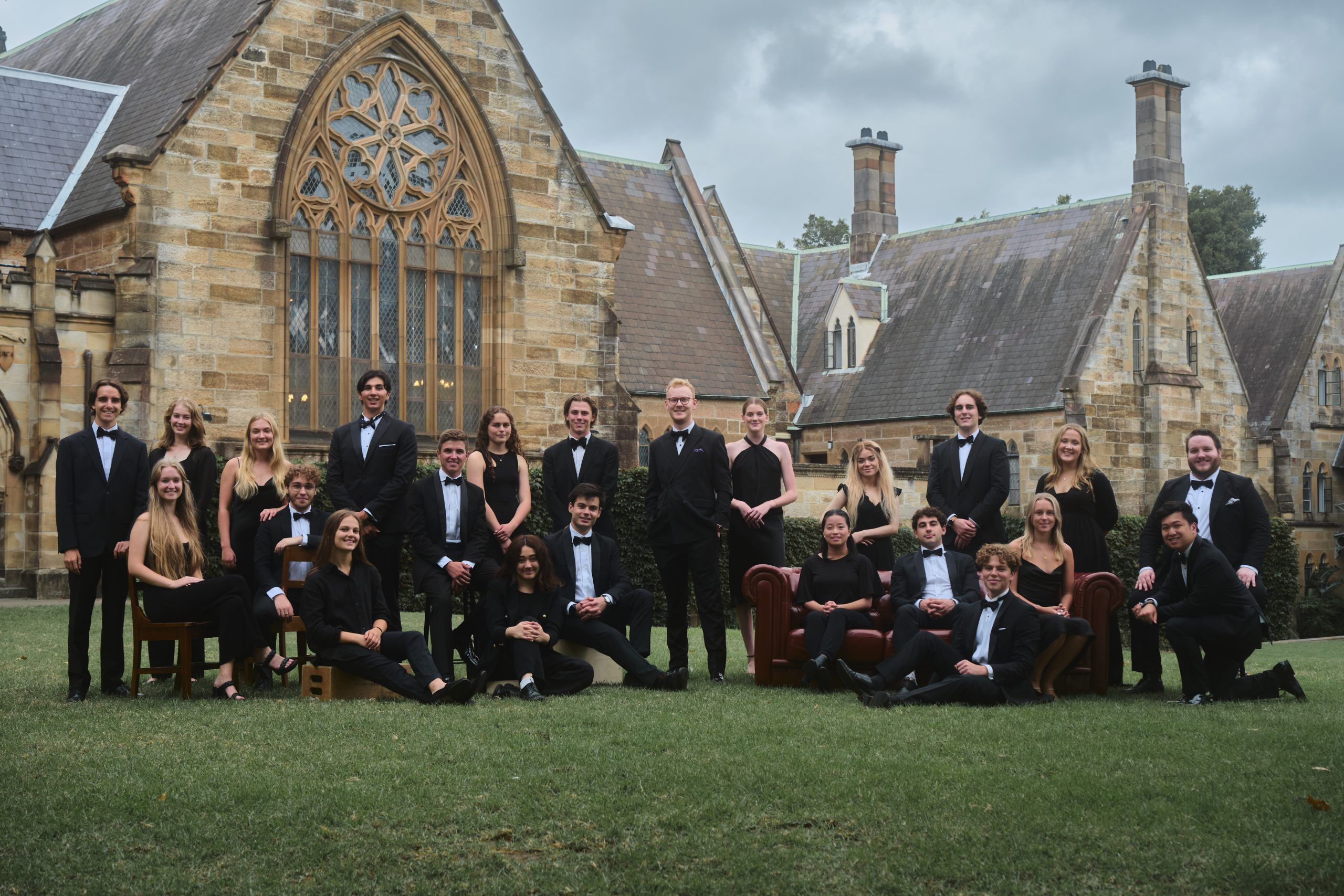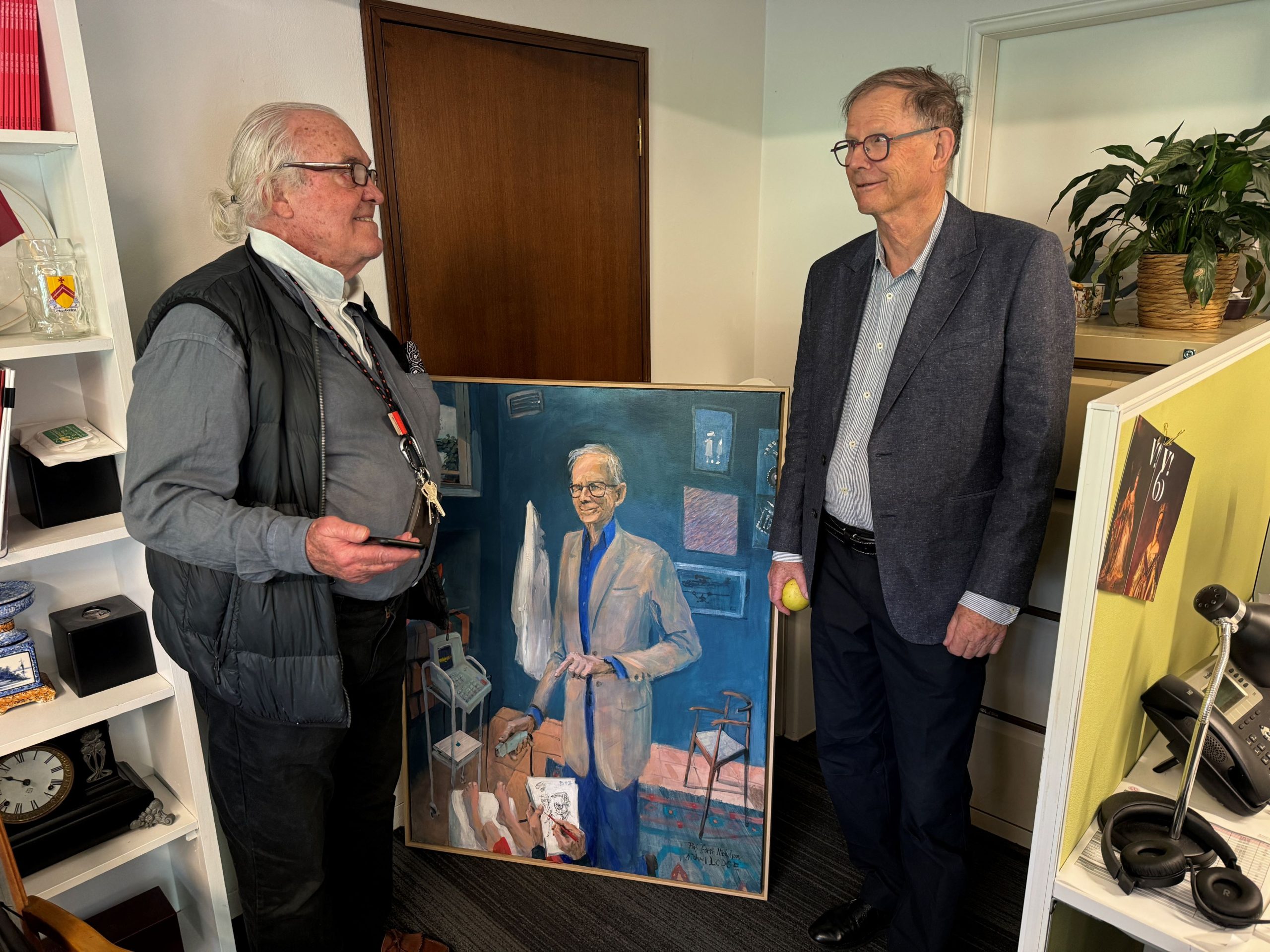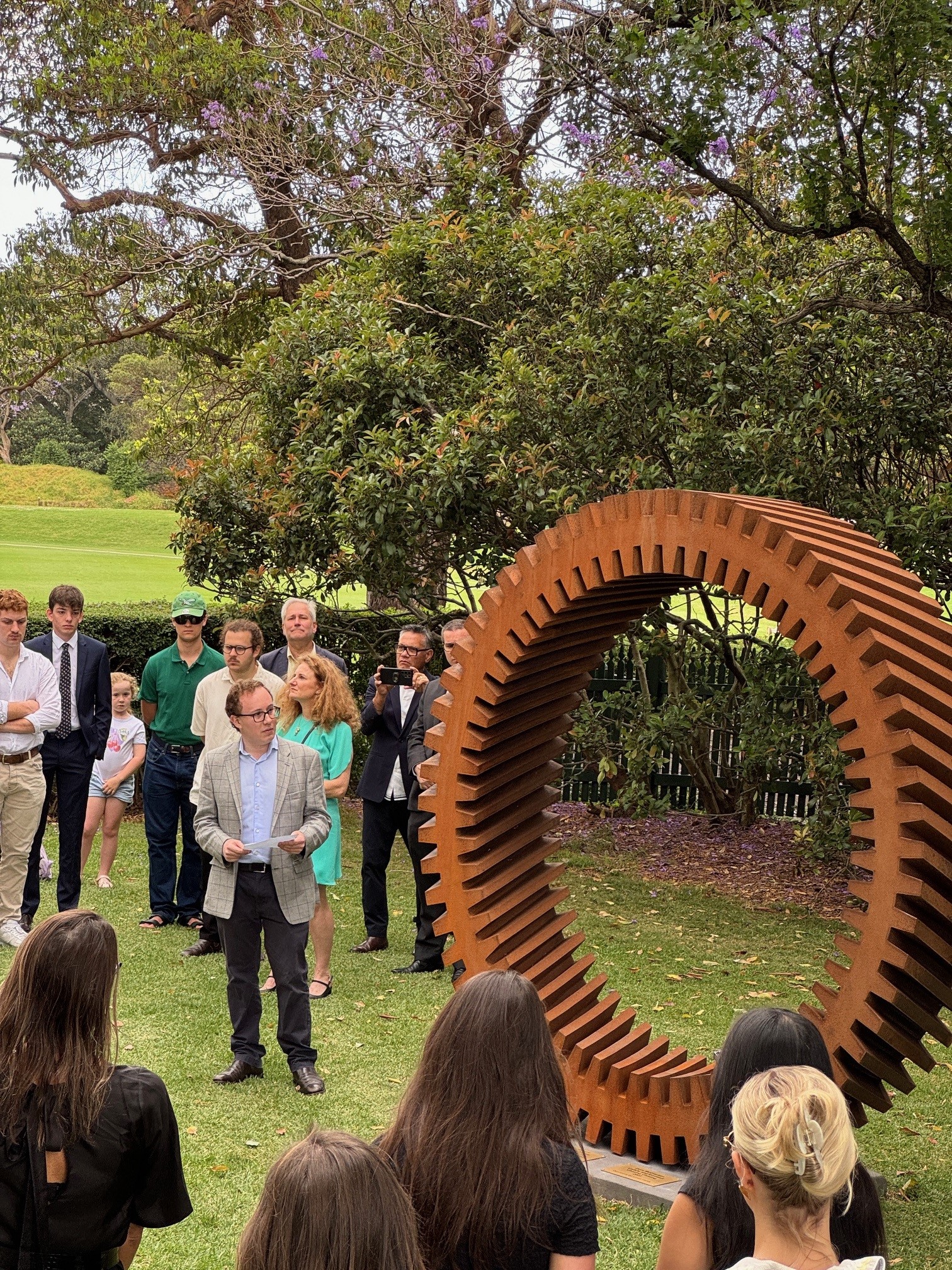At the Graduate House Mid-Winter Feast on 14 June our post graduate community celebrated the end of Semester 1 and the 5th year of Graduate House. Towards the end of the dinner something quite different happened in the 165-year-old Blacket Hall. One of our leavers, Linda Zhang (MEd(Psych)) performed a traditional fan dance in Chinese Qipao dress to the great delight of the students, alumni, staff and guests attending.
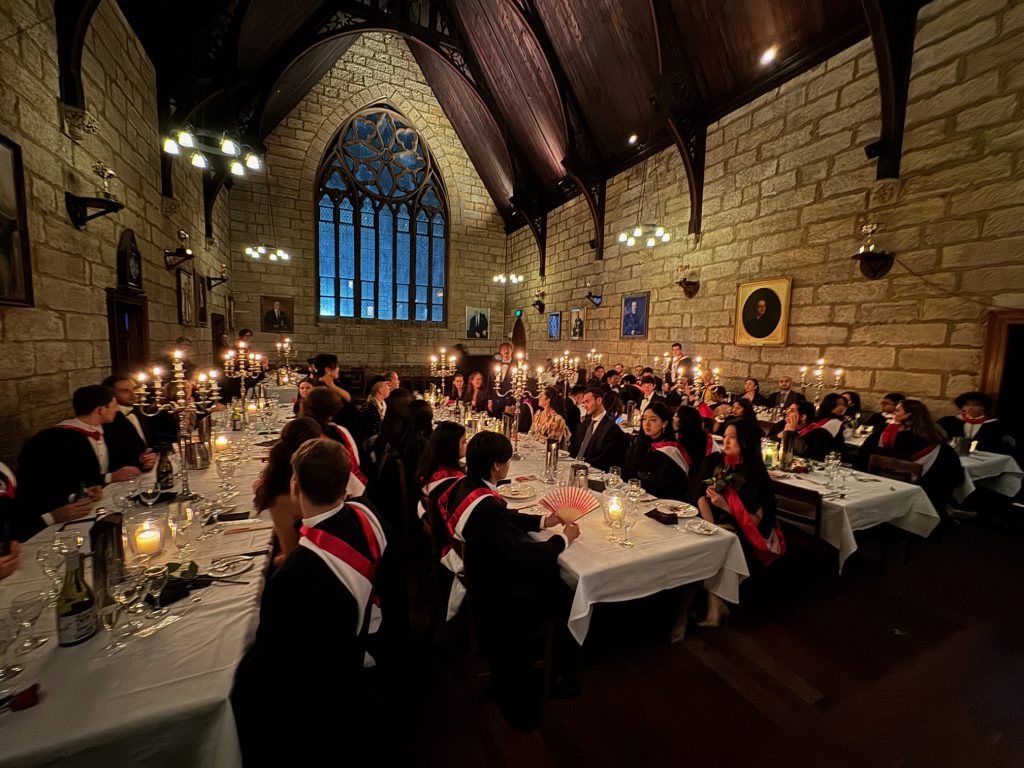
Linda explains the tradition below.
The Chinese dance drama ‘Confucius’ is a large-scale work that expresses the philosophical and emotional journey of Confucius’s life through modern dance. The drama uses Confucius’s life as a narrative thread, exploring his philosophical thoughts, political ideals, and personal emotional world through dance and music. A distinctive feature of this drama is its integration of traditional and modern dance elements, using modern dance techniques to interpret traditional cultural themes, giving the work both depth and a contemporary feel.
Regarding the ‘Letter Dance’, this is a symbolic dance within the drama. In this scene, the dancers depict the exchange of letters between Confucius and his students and friends. These letters convey not only knowledge and wisdom but also emotions and longing. Through dance, the performers use body language to express the deep affection in the letters, as well as Confucius’s passion for educating his disciples and his pursuit of ideals.
In the dance, performers often use graceful and powerful movements, combined with visual effects and music on stage, to transform this non-verbal communication into an emotional experience that the audience can perceive. The floating letters symbolize the transmission of thoughts and the flow of culture. The entire dance not only portrays Confucius as an educator but also reflects his inner world and endless pursuit of knowledge.
This creative form of dance expression is an attempt by Chinese modern dance drama to explore traditional cultural themes. It reinterprets the life and thoughts of Confucius through the language of modern dance, making it more accessible to the aesthetic and feelings of modern audiences.
Originally performed by male dancers, this piece of the dance drama was adapted by Linda, who replaced the letters with fans, incorporating elements of traditional Chinese fan dance. The Chinese fan dance, has a rich history that dates back over 2,000 years. Originating during the Han Dynasty from 206 BC, it was initially performed in imperial courts and later became popular among common people. In China, fans are not only practical tools for cooling but also cultural artifacts that represent Chinese aesthetics and artistic expression. This innovative performance showcased the grace and strength of Chinese female dancers.
What Linda wanted to express through her dance was to bring more cultural diversity to St. Paul’s. She also gave a Chinese folding fan to everyone attending to show her thanks and bid farewell after her year in Graduate House. Linda is a graduate of Macquarie University in Accounting and has completed a MEd in Educational Psychology at Sydney University.

